#but i liked reading national geographic magazine and they always had maps to go along with articles about countries
Explore tagged Tumblr posts
Text
11/12, US
sitting here thinking about how stupid americans are at geography yup
#they don't tell you which one you got wrong though?#how are people supposed to learn if they don't know which ones they got wrong?#anyway i figured it out#i said the philippines instead of japan#without the rest of the map there to show where it's located#(i promise i know where japan is)#i never really paid that much attention to the shape before#it's longer and thinner and more angled sideways than i realised#we only had one geography class in school after elementary school#in 7th grade (age 12/13)#so i'm not surprised if other americans did poorly if they had something similar#but i liked reading national geographic magazine and they always had maps to go along with articles about countries
68K notes
·
View notes
Text
Revisiting Pura Vida
for access to more photos and videos, visit: https://kyliebreenphotography.com/2020/05/01/revisiting-pura-vida/
Over two years ago I left the country for the first time in my life. I have always had a sense of wanderlust, known as a strong urge to travel. In April of 2018, I signed up for a mission trip to Costa Rica through my high school. Little did I know that my experience abroad would shape me completely (read more here). After experiencing the beauty and peace that I found everywhere in Costa Rica, I knew I would have to return to the place that holds such a special place in my heart.
This January I was fortunate enough to return to Costa Rica through pure luck. My father won a free vacation through his work and he was able to pick from a list of destinations. On that list was a trip for two to Costa Rica. After some serious convincing and a lot of procrastination on my family’s part on deciding where to go, we decided that my dad and I would go to Costa Rica (thanks Mom & Bro!).
My dad and I are the travelers of the family (considering my mom dislikes planes) because my dad has lots of experience traveling for work and I want to see the world. We planned our trip for two weeks, one week with the Caravan tour that he won and one week adventuring on our own. Caravan is a touring service that offers tours in several destinations at an affordable price. You can see the route we decided to take in the map below.

In January it is Costa Rica’s dry season which lasts from mid-November to May. The dry season typically consists of sunny, hot, and windy days. The Caribbean side, however, basically has its own weather pattern and is still rainy even during the dry season. The difference between the Carribean and Pacific side are vastly different which I will explain later in this blog.
GETTING READY
PACKING
I am definitely an overpacker when it comes to travel and the thought of a two-week long trip made me nervous. I started out by making a very long list of things I needed to bring and narrowed it down from there. Here are some key items that you should bring to Costa Rica:
Hats & Sunscreen: you must protect your skin from the blazing sun.
A Camera or GoPro: Costa Rica is absolutely stunning and you will want to capture the wildlife and landscapes, but remember that anything can be lost or sadly stolen when traveling so be extra cautious when brining valuables. I brought my camera and laptop and everything was fine, but on my prior trip I was advised to only pack what I needed. Don’t forget to pack your camera batteries, chargers, and memory cards.
Portable Charger: You never know when your phone will run out of juice so make sure to bring a portable charger so you’re always on the grid!
Bug Spray: There will be several hikes that will introduce you to some unwanted bug bites, so in order to avoid them make sure to pack some spray.
Water Bottles: The tap water in Costa Rica is mostly not safe to drink, so bring water bottles and fill them with fresh water from the grocery store instead. During our trip Caravan provided us with bottled water each day, but on our own we bought gallons of water and filled up our bottles before we left for the day. It is so important to stay hydrated when you are working up a sweat.
Comfortable Clothing: Keep in mind that comfort should come before fashion, especially in such hot weather. There are a series of activities that I did that required a change of clothes, so make sure to pack efficiently. We were able to use a laundromat during the trip so we did not have to pack as much! Make sure to pack hiking shoes, sandals, and water shoes because you will need them.
Toiletries: In many places we stayed, the hotel did not provide shampoo, conditioner, etc. so make sure to bring some of your own or check with where you are staying.
Journal: This may seem silly, but if you are someone like me and you have a bad memory, keeping a daily log of your activities will allow you to revisit your trip at any time.
¿HABLAS ESPAÑOL?
Costa Rica is primarily a Spanish-speaking country so it is a good idea to download a translating app onto your phone. A lot of Costa Ricans speak English as the country depends on tourism for their economy, but don’t expect everyone to. And it’s fun to learn a new language when it is everywhere around you! Go out of your comfort zone and try to ask questions in Spanish.
DATA PLAN
Many data plan providers have an international plan that you can sign up for, but a cheaper option is to buy a new SIM card while you are in Costa Rica. My dad is a tech wizard and he can explain this way better than me, but buying a SIM card is a more affordable option than paying a provider day-to-day. My dad bought one right outside the airport when we landed (it was a little sketchy), and it didn’t work very well so I would recommend talking to your data provider instead. My provider had a special plan for $10 a day and I only used it for 3/4 days when I needed to check in with the world. For the most part I was able to get away with using our hotel’s WiFi.
MONEY
Every Costa Rican shop I went to, whether it was an artisan shop or a restaurant, accepts U.S. dollars as well, but it is not a bad idea to exchange some of those dollars for colones. Most places, especially in San José accept both Visa and Mastercard credit cards, but once outside of the city there are a few small, family-owned businesses that only accept cash.
TRANSPORTATION
We were on our own for the first few days we were in Costa Rica, so we needed a rental car. We used the rental service Adobe rent a car which was very reliable and they even picked us up from the airport and drove us to our car. During our Caravan tour, we were provided transportation everywhere and we had our own bus (shoutout to our bus driver Chega for doing an amazing job).

THE ADVENTURE
TURRIALBA BED & BREAKFAST
After a long day full of travel, we finally arrived at Turrialba Bed & Breakfast, a comfortable, family-owned hotel located in the heart of Turrialba, two hours outside of San José. There are 11 rooms avaliable that are all different sizes. This bed & breakfast is not a typical, luxurious hotel, but it was an excellent way to observe the lives of many locals in Costa Rica. Every morning, one of the staff members would make us breakfast which included pineapples, papayas, rice and beans, juice, toast, and eggs. There is a gorgeous outside patio with many hammocks, a jacuzzi, and several fish tanks that add to a welcoming and relaxing atmosphere. Additionally, there is beautiful rooftop seating with an incredible view of the mountain range surrounding the city. The family was primarily Spanish-speaking, so make sure to know some basic spanish (like if you want fried eggs you should know huevos fritos)!

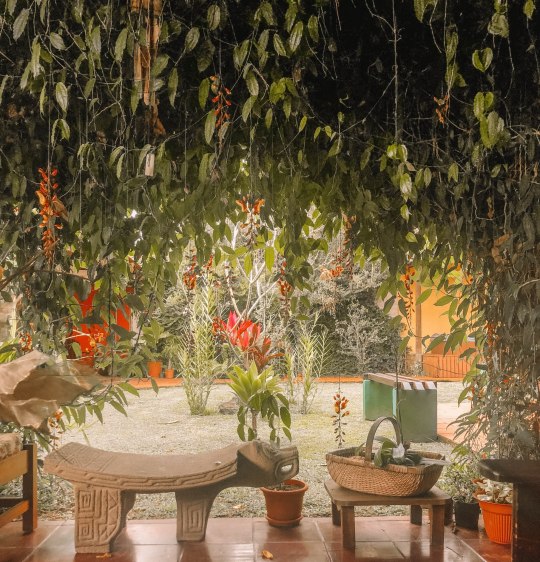
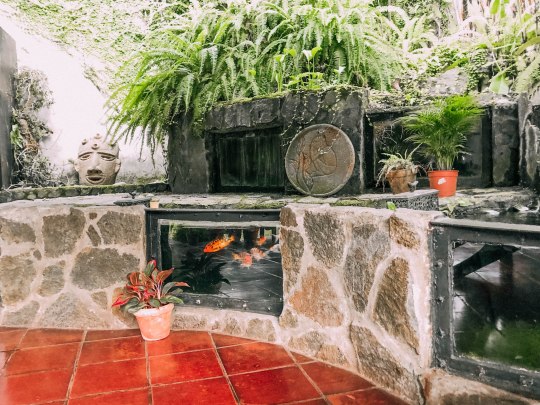
Within walking distance of the hotel is a beautiful park with a gazebo that the locals love, and restaurants that will not disappoint your taste buds. During my stay, I dined at More Than Words which is right around the corner from the hotel where we enjoyed a delicious pizza and salad.
We stayed at this B&B for two nights and had an amazing time experiencing Costa Rica outside of the populated city.
RIVER RAFTING
After an early morning breakfast at the B&B, we made our way to Tico’s River Adventures. Their base is located in Turrialba only about 10 minutes away from our hotel, and they even offered to pick us up and drop us off! Make sure to pack a change of clothes with you and be aware that you will have the opportunity to swim near the end of the trip, so wear clothes you don’t mind getting dirty/wet. Tico’s website suggests bringing:
swimsuit/shorts (no jeans)
sunscreen or visor
strap to secure glasses
tennis shoes or sandals with ankle straps (no flip flops)
light rain jacket for rainy days
cotton T-shirts for sunny days
A day trip is from 8:30 a.m. to 3:00 p.m., so be prepared for a long day! Tico’s is the first rafting company to get to the river giving them a competitive avantage over other companies. From Tico’s base, participants are picked up at various destinations on the way to the Pacuare River where the rafting takes place. Be aware that you are all squeezed together in a van depending on how many people are going on the trip. The ride took around an hour to an hour and a half total, and near the end of the drive were some very rocky and steep roads. Between the water and the drive, this trip is not for anyone who has motion sickness.

That being said, the long drive was 100% worth it and rafting was one of the biggest highlights of the trip. The Pacuare River is one of the top five most beautiful ratable rivers of the world according to National Geographic Magazine. Flavio was our guide and we were in a six person raft. Flavio spoke fluent English and had worked in California for a long period of time, and he made our rafting journey comfortable, educational, and hilarious. There are bathrooms located at the start of the river, but after that you will not see another bathroom for around two hours. For equipment we wore a lifejacket and helmet to ensure our safety during the trip. We started the rafting by going over basic instructions on how to paddle forwards and backwards which was easy to learn. There were rapids from difficulty levels one to four (none were too difficult in my opinion), and the rafting started out fairly easy. Along the river are two stunning waterfalls, small villages of the indigenous people of Costa Rica, and several rapids.

There are foot straps within the raft for stability, and falling out of the raft is not a problem as the guides are well trained. I only *almost* fell out of the raft once when Flavio decided to do a 360° turn while going down a rapid. I nearly flew off the side but I was thankfully saved by my dad.
At a calm section of the tour, we were able to get out of the raft and swim. It was one of the most calm and relaxing moments of my entire life. I floated on my back and heard the sounds of wildlife from birds chirping to howling monkeys in the distance. The rainforest trees towered above me on either side, and the water’s current swept me through the warm yet refreshing river.
We drifted towards a set of smooth rocks where we docked the rafts and the guides made us a delicious lunch. We were able to build our own tortillas and for dessert there was fresh pineapple.
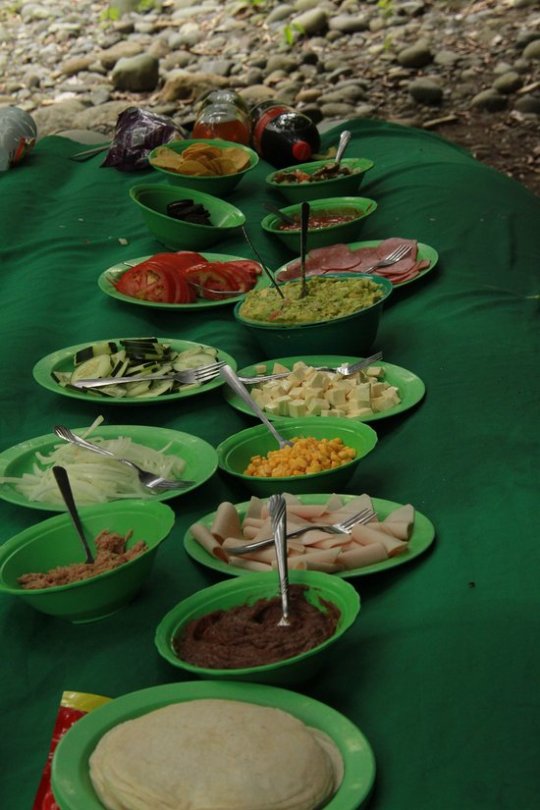
After lunch, we continued for a while longer down the river until we reached the end of the rapids. We docked the boat and ended at a small restauraunt where we had the option to buy drinks or use the restroom facilities. Throughout the rafting journey, there is a photographer who kayaks ahead to take photos, and they are offered at the end of the trip for those who want to buy them. Overall, I would highly reccommend river rafting to anyone adventurous enough to try!
SAN JOSÉ
While we were at the B&B, someone who was staying there highly recommended the Mercado Central in San José. We had our final breakfast in Turrialba and drove to San José to find the market, but sadly we found it to be closed on Sundays. We paid a small amount to park in a fenced-in lot and we decided to walk around San José even if we didn’t get to go to the market. We decided to try and find Museo del Oro Precolombino (The Pre-Columbian Gold Museum) after doing some research. On our way to the museum we walked through Central Avenue Boulevard which was lined with shops and fast food restarants. Families, couples, and individuals crowded the walking areas with one hand holding an ice cream cone and another grasping a shopping bag. There were vendors along the sides of the path that were selling handmade bracelets, keychains, and more.

On our way to the museum we found ourselves pretty hungry for lunch so we stopped at the National Theater of Costa Rica (Teatro Nacional Costa Rica) for some delicious food. The interior of the theater was stunning and had several statues just inside the enterance. There was a small cafe located within the theater that served brunch. The cafe was very high-end with paintings and sculptures that decorated the interior. Waiters and waitresses were dressed in black and white and the overall feel of the cafe was prestigious. My father had more than one latte they were so delicious, and I enjoyed my meal as well. We got a window seat which was perfect for people-watching and enjoying the warm breeze.

After our lunch we asked directions to the museum and found right next door to the theater (you have to go down some stairs to find it). The museum was massive and had 3 different floors, one for a history of Costa Rican money, another for artwork, and the third for the gold. There were interactive stations, a fascinating video on the indigenous people of Costa Rica, and hundreds of beautiful artifacts. There was an entry fee that was a little pricey, but with the amount of history and art you got to see, it was worth it.

After our adventures in San José we headed to meet our Caravan tour at the airport where everyone was arriving.
CARAVAN TOUR
When traveling, I fear limitations and impetuosity so I did not expect to have the greatest experience with a guided tour. I like to venture off the formed paths and explore on my own with my camera in my hand – free from time constraints and noisy crowds. Nature has always resonated with me and calmed me down so I was afraid I wouldn’t have the same experience on this tour as I did when exploring Costa Rica on my own.
My fears were silly. This tour was incredible and because of it I was able to see some of the most stunning spots of Costa Rica. Martha Seeyle was our amazing guide and she made the experience so much better by teaching us about the culture and history of Costa Rica. There were some long bus rides, but Martha always had something new up her sleeve to teach us.

After settling in at Hotel Barceló in San Jose, we prepared for our first day of activities: a trip to a coffee farm.
COFFEE TOUR & BUTTERFLY FARM: ALAJUELA If you are not an early riser, this trip may not be for you! We woke up at 7:00 a.m. and grabbed a buffet style breakfast at the hotel (which was very yummy). After breakfast we departed for Alajuela, but on the way we stopped at an artisan souvenir shop and saw the world’s largest ox cart! We got a mini tour of where they make the wheels of ox carts and saw some artisans in action. They provided some fruit and a lemonade-tasting drink (that apparently wasn’t lemonade) for us to snack on. We were given time to shop around the store and use the restrooms, and then we were off to the Doka Coffee Plantation.


Once we arrived we ate a buffet-style lunch in an open area full of seating, and we were the only group there. After we finished eating we were given the opportunity to explore the grounds which had a butterfly garden! There were two levels to the garden and plenty of open space for the butterflies to fly around.
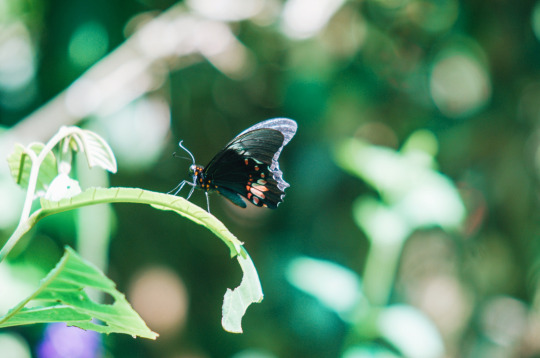
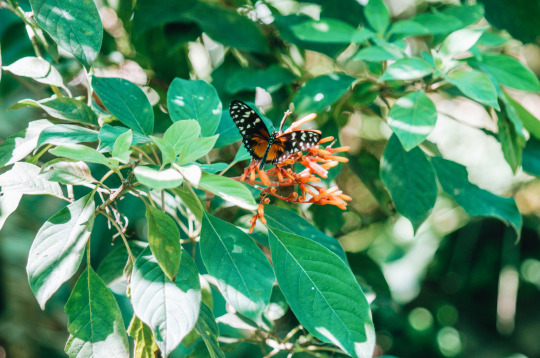
Our guide for the coffee tour was very knowledgable, but in my opinion I found the tour to be a bit bland at times considering I have no interest in coffee. Our guide took us through the step-by-step process of collecting coffee beans from picking them to roasting them and we even watched a short video about the plantation before we started our tour.
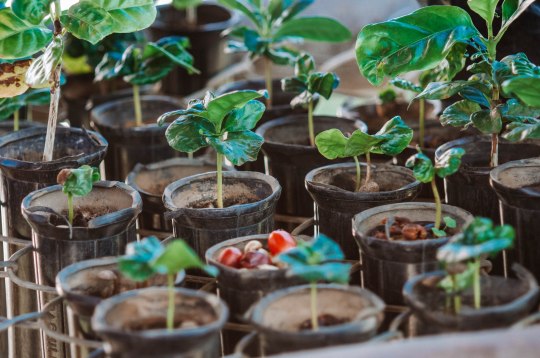
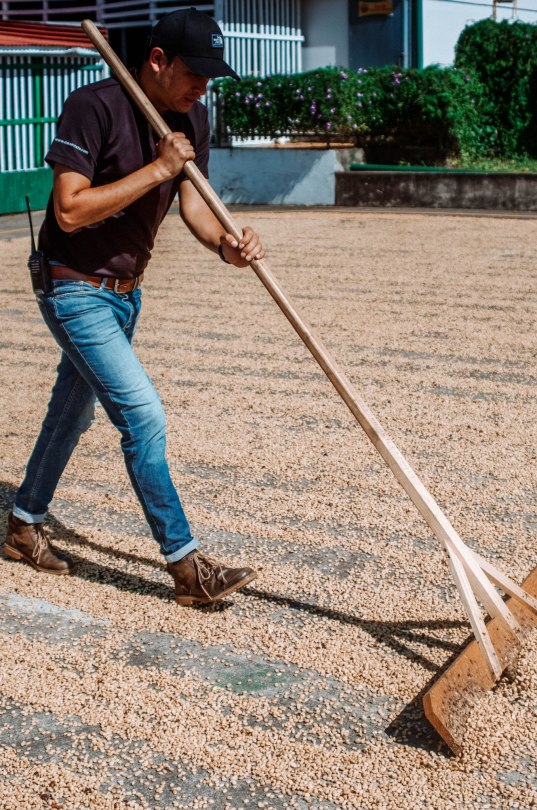
One pretty great part though was that we got to sample some chocolate and vanilla covered beans (if you couldn’t tell I have a sweet tooth). We were also given the opportunity to buy the bags of beans directly from the plantation which was pretty neat after just watching the step-by- step process.

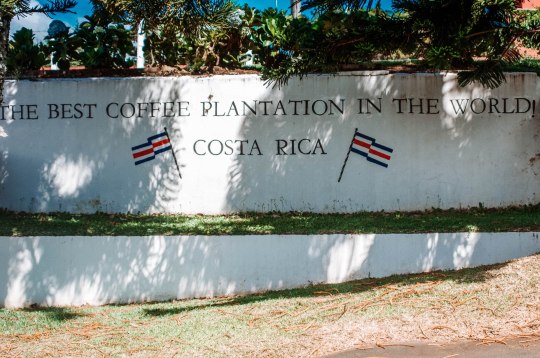
I think that a lot of people on the tour enjoyed the plantation, but because I am not a coffee drinker and I prefer activities with a little more action, this was my least favorite activity while on the trip (it only goes up from here!).
We arrived back at our hotel around 3:30 which gave us plenty of time to do some exploring around the hotel and get some rest before dinner. We walked to a local market to pick up some snacks because we had already run out of the ones we brought, and had a relaxing evening. Hotel Barceló was one of the nicest hotels we stayed at with functional wifi, great food, and comfortable and spacious rooms. The only issue is that they played the same exact song on repeat for every single meal to the point where it became a running joke and we could all hum along to it.
RESCATE ANIMAL ZOOAVE: FORTUNA We left the hotel at 8:00 a.m. after enjoying another buffet-style breakfast at the hotel and in no time we arrived at the Rescate Animal Zooave, a wildlife rescue center located in Fortuna. The center is home to 800 animals that are not able to be released into the wild due to injury or becoming desensitized to humans. We watched a short video about the history and mission of the center and we were encouraged to donate to help the animals in the end for surgeries or for new equipment. I took over a thousand photos alone at the center of all the stunning birds, iguanas that roamed free, crocodiles, monkeys, and more. We didn’t even get to see all of the animals the park was so big, and we had a pretty funny encounter with one of the monkeys. We had another buffet-style lunch (we got used to it) at the center which was very yummy, but we ran out of time to try and see the rest of the park. All of the animals seemed to be treated very well and the establishment was clean and welcoming which made me feel really good.
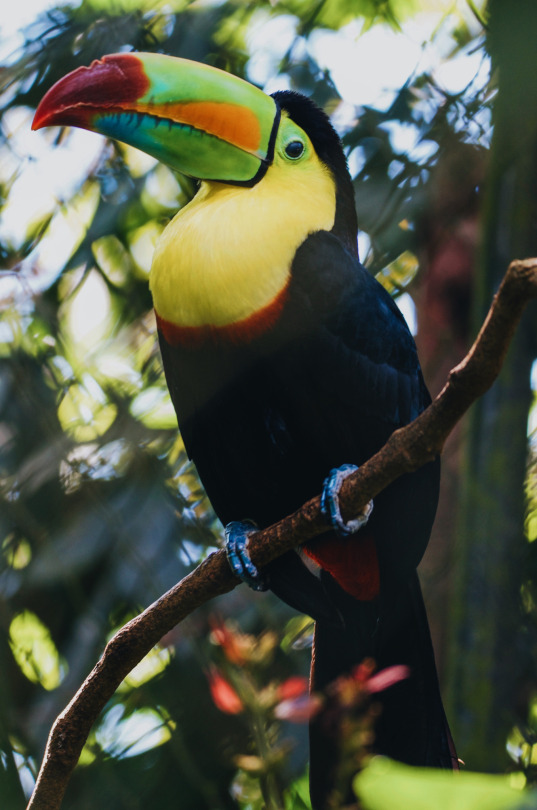

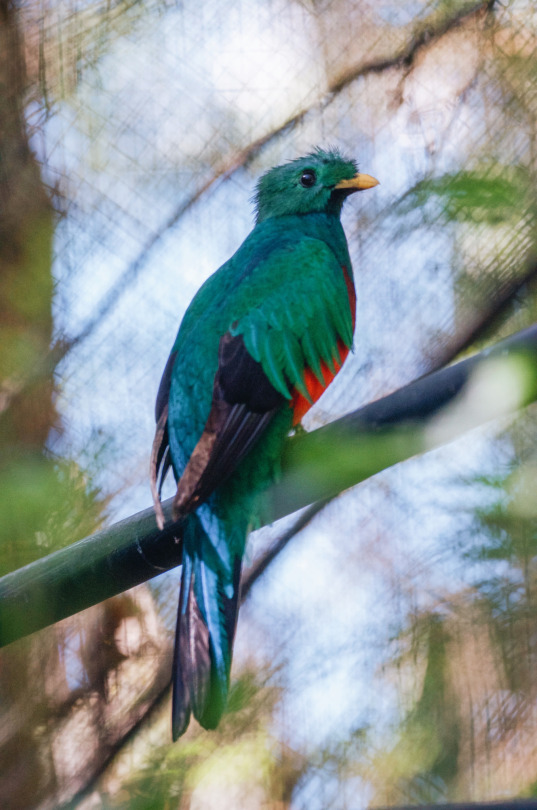
We headed to our next hotel, Magic Mountain Hotel located in Fortuna. To break up the drive, we stopped at a stunning park where we grabbed ice cream and walked around. There were two adorable, stray (we think) dogs in the park that were very friendly and hung out with us while we ate our ice cream.
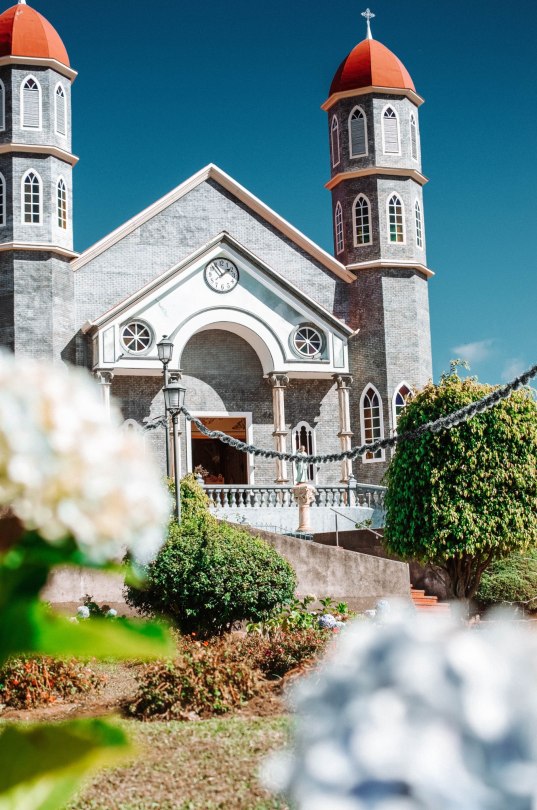

The great thing about this tour was that Martha always made sure we broke up the longer drives which gave us a chance to grab some food, stretch our legs, and use the restroom. I believe the longest we were in the bus at one time was 2-3 hours.
We arrived at the hotel around 4:00 and instead of eating dinner at the hotel, my dad and I decided to take a 20 minute walk (2km) into town to grab some local dinner. Before deciding on a place to eat, we explored the local shops and bought a few postcards to send out to our family in California.

We ended up at a place called Lava Lounge which had delicious food and not to mention one of the best smoothies I have ever had. The lounge had nice seating that looked out onto the street and an artisan was crafting at the enterance for entertainment. The menu was very extensive and a relief after having too many buffet-style meals (see the menu here). I ordered a Santa Fe wrap and a strawberry banana smoothie which were both very filling. I am a dog lover and the lounge had various advertisements about the importance of adopting or volunteering at shelters which made my heart happy. You could even buy a digital food item and the proceeds would go to the dogs.
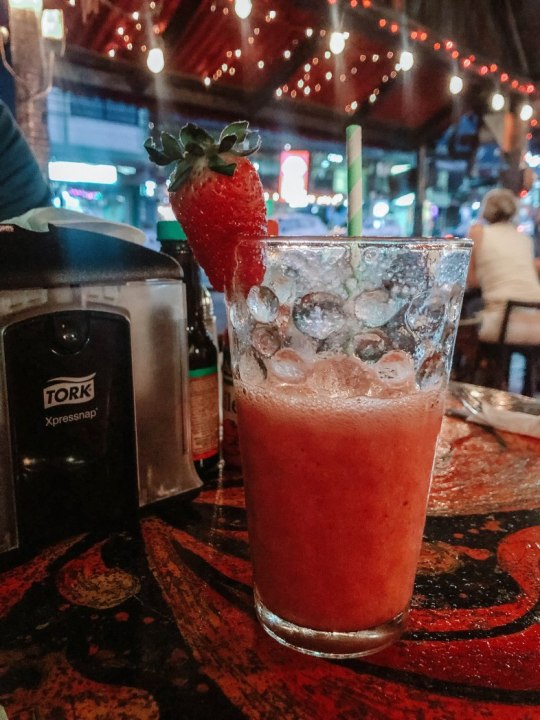
Walking back to the hotel was a little sketchier considering there were limited sidewalks and it was dark outside, but it was totally worth the yummy meal. The Magic Mountain hotel had a great view of the volcano (when it wasn’t cloudy), a pool, and very comfortable rooms with air conditioning. The WiFi, however, did not work very well and we were only a few steps away from the lobby which was a little frustrating.
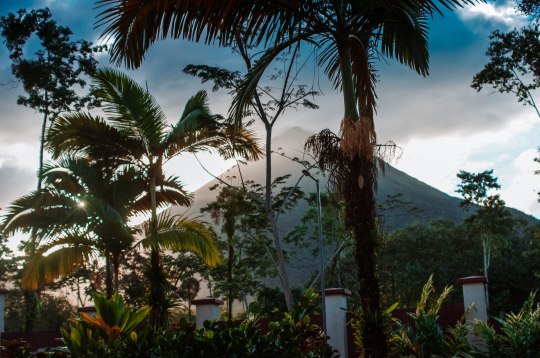
CAÑO NERO HOT SPRINGS: RIO FRIO
We departed the hotel at 8:00 after eating breakfast and drove north until we reached the Rio Frio river. We stopped at a small restaurant and then we proceeded to take a short walk to the river where we boarded a boat. We saw so many fascinating animals from monkeys to lizards. We travelled so far north that we were able to cross the border of Nicaragua!
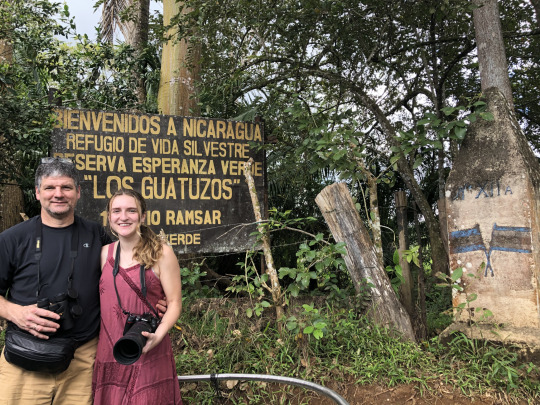


The boat cruise was only an hour long, but afterwards I was known as the “camera lady” because of my massive lens and how I ran around the boat trying to get as many photos as possible – I was definitely in my element.
After our tour we ate lunch at the restaurant we parked at and then headed back to the hotel. Miraculously, on our way there Chega, our bus driver, spotted a three-toed sloth and a two-toed sloth in the same tree! We pulled over and took a look at the sloths which was very rare to see.
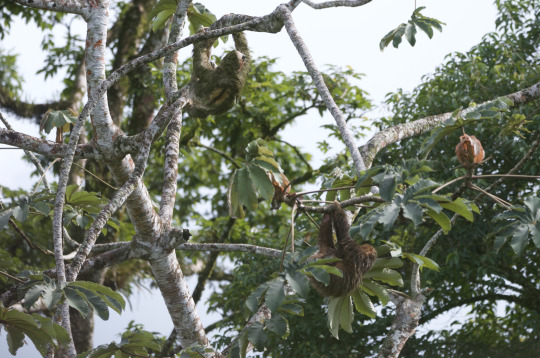
Our next destination was the Baldi Hot Springs which was not exactly as natural as I expected. We were given the option to opt out of this activity, but my dad and I wanted to fill our day. I was expecting a few pools that were completely natural and warmed by the volcano, but I was surprised to find more of a man-made waterpark. There were bars, food, lounge chairs, slides, and lockers for your belongings. Rather than the sanctuary I was thinking of, it was more comparible to a waterpark.

The food and drinks were incredibly expensive (one smoothie was $16) which was disappointing. On the positive side the water was incredibly relaxing and there were separate pools with different temperatures including a cool-down zone.
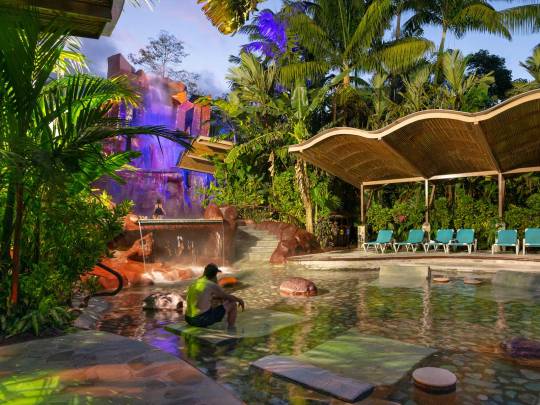
Because of my initial expectations I was disappointed with the hot springs, but it was nice to sit down and relax in some warm water after a busy day.
HANGING BRIDGES: ARENAL We had a very early morning and woke up at 5:45 a.m. and had breakfast at the hotel at 6:00. Our next destination was the Mistico Arenal Hanging Bridges Park, and to my surprise I had actually been to this park on my last trip! During this trip we were able to see some monkeys, but we didn’t see much other wildlife. The hanging bridges were so cool and the sounds of the forest surrounded us at all times. The walk was around 3.2km, but there was also a shorter version (1.9km) for individuals who didn’t want to walk as far.
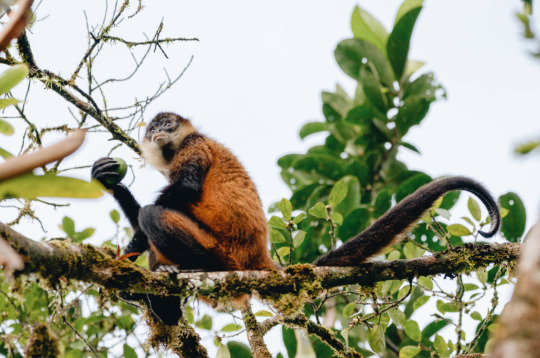

Near the end of the walk is a natural waterfall that serves as a great photo spot. Additionally, the entrance of the park has a perfect view of the Arenal volcano, and I was able to recreate a picture from my last trip!
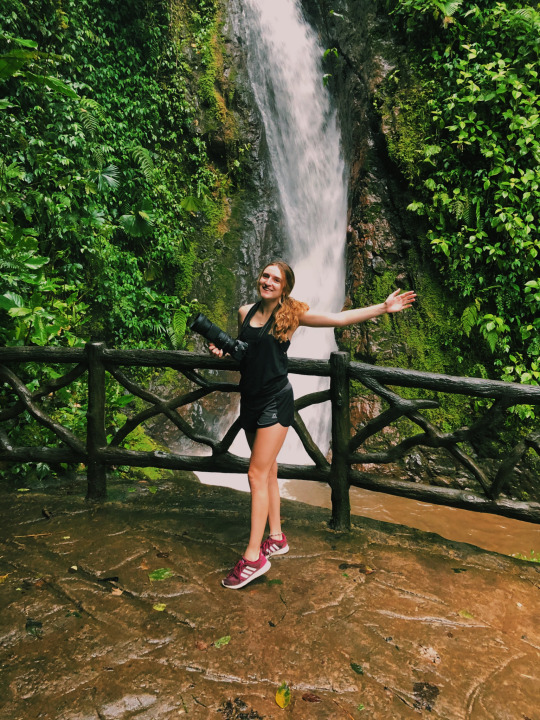


I love the hanging bridges because you become one with nature, and there were barely any crowds so it was incredibly peaceful. After our walk we went headed to our next hotel and stopped for lunch and at another souvenir shop in order to break up the drive (we spent most of the day driving). We even drove by the hotel that I stayed at during my last trip (a.k.a. my favorite place in the world).

^^^Hotel Los Héroes – Read more about my last Costa Rica trip here.
We eventually arrived at the Marriott Resort just in time for sunset. After settling into our rooms, we walked down to the ocean (the resort is located on the beach) and took some amazing pictures of the landscape.
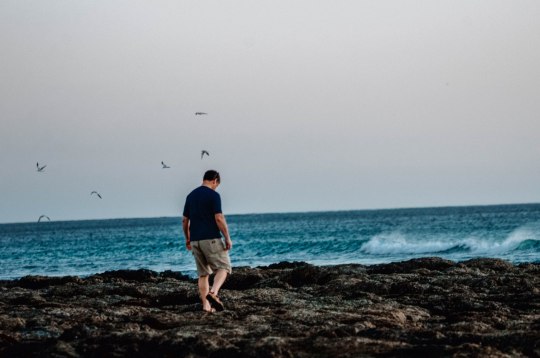
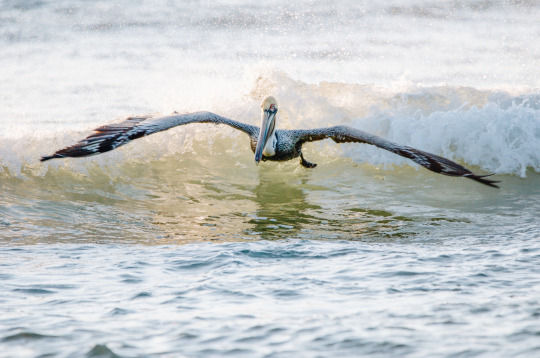
JW MARRIOTT BEACH RESORT: GUANACASTE
We had the entire day dedicated to this resort, so we got to wake up whenever we wanted. In an effort to not waste the day away sleeping, we woke up at 8:30 and got breakfast. There was a separate restaurant just for our tour and we had access to it during a certain time frame. When I walked into the buffet, my jaw DROPPED. I have never seen so many pastries, fruits, cereals, eggs, and more in one place. I quickly filled my plate and as much as I wanted to go back for seconds, I was way too full.
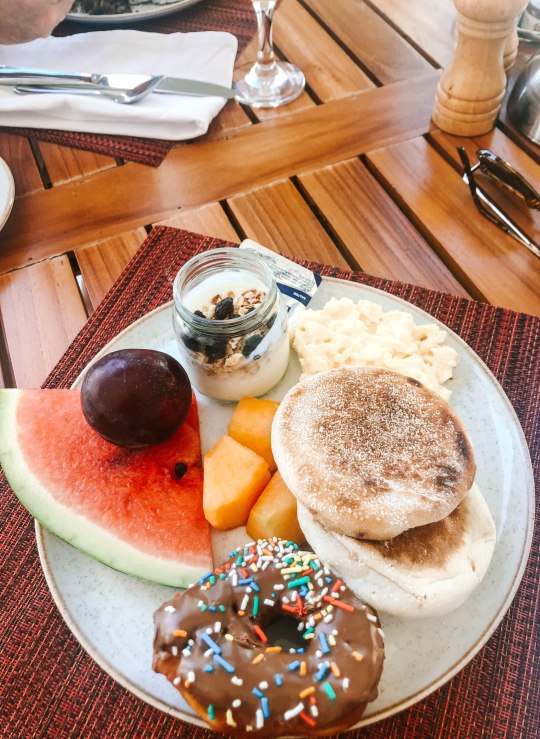
We had the entire day to ourselves, so we decided to go for a hike located on the hotel’s grounds. We didn’t see anyone else during the hike, so it was just us and the birds. I got to take pictures of some beautiful birds, but I saw even more wildlife. While we were walking we were shocked to hear some movement above us, and we looked up to see a pack of howler monkeys! They were so calm and didn’t move for quite some time so we were able to observe them closely. One of the monkeys was carrying a baby and I was able to take one of my all-time favorite photos.
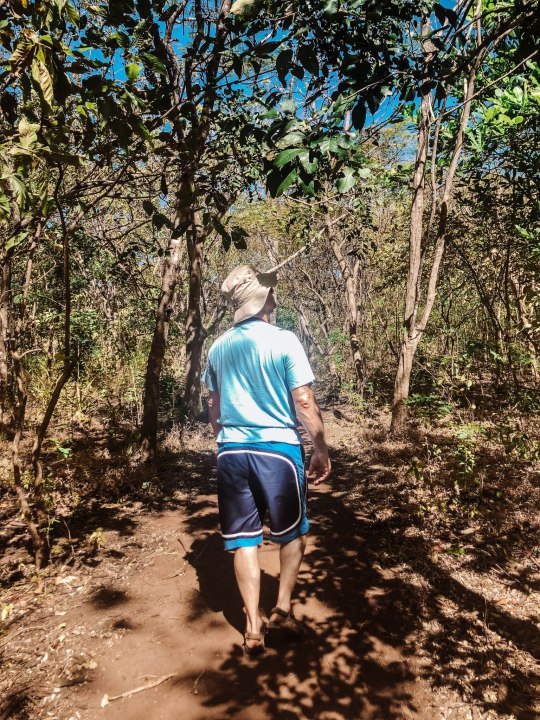
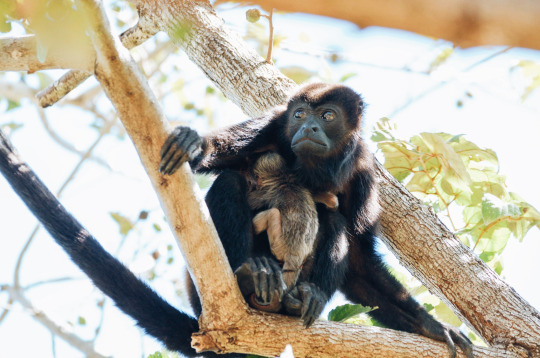
After our hike we decided to cool off at the hotel’s infinity pool which overlooked the ocean. I ordered a strawberry banana smoothie (they became my obsession on this trip) and took some time to relax under the sun. After swimming in the pool, we told ourselves we had to jump into the ocean ( I didn’t get to on my last trip), so we ran into the waves for a surprisingly very refreshing swim. The water was a perfect temperature and the sand was so smooth – the best swimming conditions in my opinion.
While we were on the way to the hotel, Martha mentioned that there were horses only a short distance from the entrance so we decided to go pay them a visit. Our timing was impeccable as the sun was setting, so a beautiful, golden light backlit all of the horses. They came right up to the fence and let us pet them, and one even started to eat my dad’s shirt (it was very amusing). We spent a lot of time with them until it was dark and then we decided to grab dinner and hit the hay.

Our entire group basically had to be pulled away from this resort because between the food and the amenities it was the best hotel we had been at so far.

BIRD WATCHING CRUISE: TARCOLES RIVER We woke up at 5:50 a.m. and grabbed our last, best breakfast. My dad and I “stole” extra bananas and apples from the buffet and ran to the horses with the spare time we had before we boarded the bus. We fed the horses both apples and bananas (they preferred the apples) which made for a pretty magical morning.
We sadly departed from the Marriott and headed to Tarcoles River, but on the way we stopped at a small, Monteverde restaurant for restrooms and ice cream (yes, I ate ice cream before lunch – it was delicious and only $2). We continued on the road again and stopped at a different restaurant for a buffet-style lunch. We had the choice between steak and chicken with some rice and a few other sides. The restaurant was completely open-concept with a cool breeze coming in on all sides. We even saw some iguanas crawling around outside!

We continued to drive to the river, and when we got there, a boat was waiting for us. This river is known for its crocodiles, so don’t fall overboard! On the cruise we saw birds, iguanas, crocodiles, and more. The directors of the boat tour were able to identify the crocodiles by name based on what they looked like and where they were hanging out which was pretty neat.

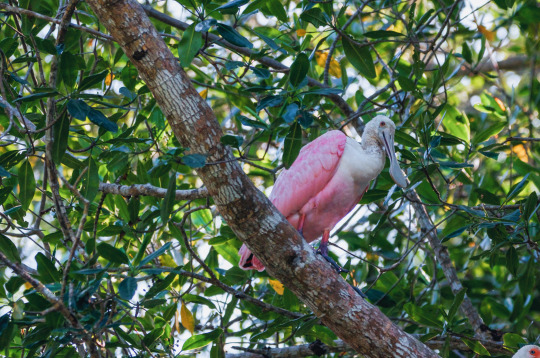
The boat tour flew by (it was around an hour long) and we headed out for our next hotel once again. Hotel San Bada had a stunning rooftop view of Manuel Antionio National Park on one side, and the sunset on the beach on the other.
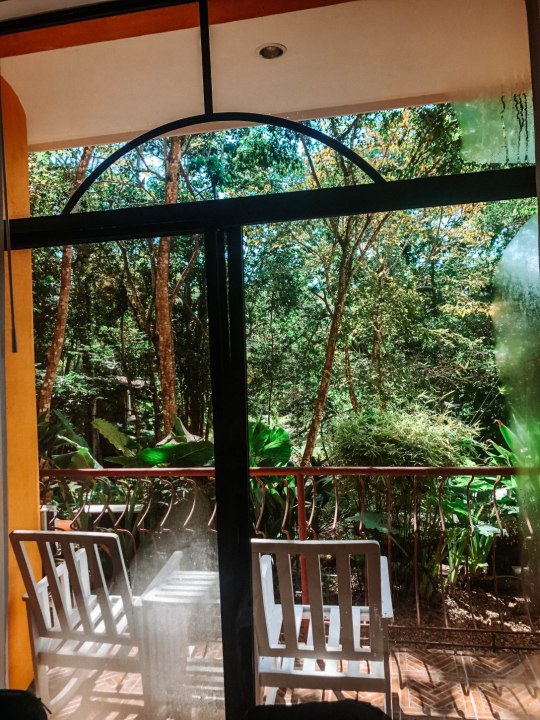
When we arrived we enjoyed another buffet-style dinner and then we went to the roof for “cocktail hour” and the sunset. I brought my camera and managed to see some Squirrel Monkeys climbing through the trees which was so cool because they are difficult to find!

The sunset was absolutely breathtaking and it was paired with some people who were parasailing which made the photos even more exciting.

Before our big day in Manuel Antonio National Park, our Caravan group watched a short video about the history of the park and learned about the trails that we could take. We were told to bring hiking shoes, a change of clothes, a towel, and a bathing suit in order to be able to do everything at the park. Martha said we could sleep in until whenever, but if you want the best experience of the park, you should go right when it opens at 7:00 a.m.

MANUEL ANTONIO NATIONAL PARK We woke up at 6:00 a.m. and ate breakfast at the hotel. We found our group at the entrance of the hotel which is conveniently located a few steps away from the park’s entrance. We chose to take the long route through the park with lots of stairs and lookout spots (I would say this hike was difficult, but an 80 year old woman with our group did it with no problems). During our hike we saw monkeys, agouti, sloths, and some birds. There was a group of Capuchin monkeys that came right up to us (they were so close that I couldn’t even take photos with my lens). In hopes of finding more birds (specifically toucans because they are my favorite), we climbed a lookout tower, but we had no luck.
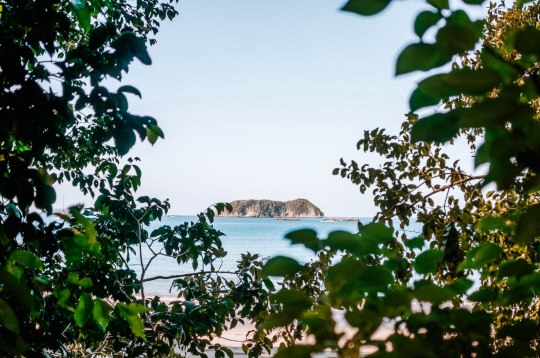
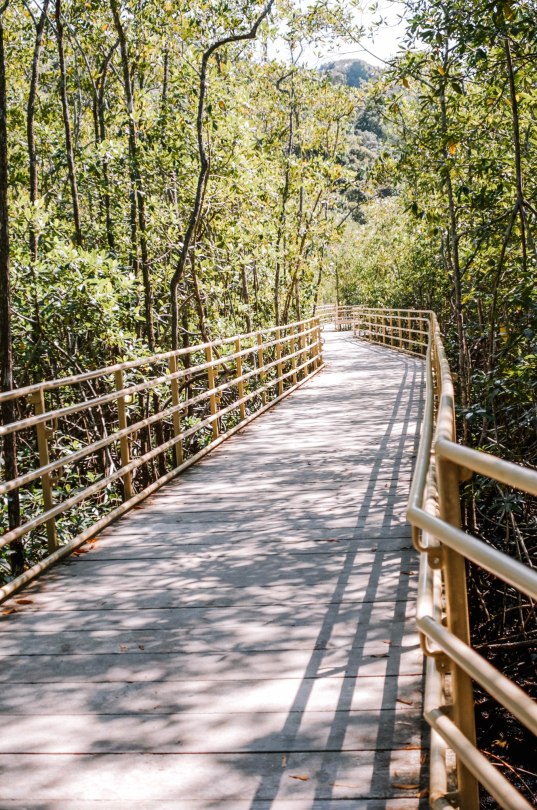
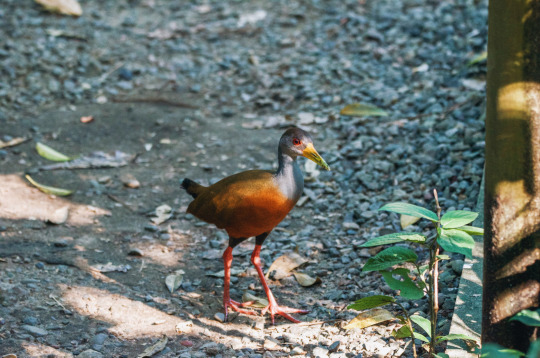
After our hike we took a quick dip in the water which was a perfect temperature! The park filled up quickly and it seemed like most people went for the water and not for the hikes.
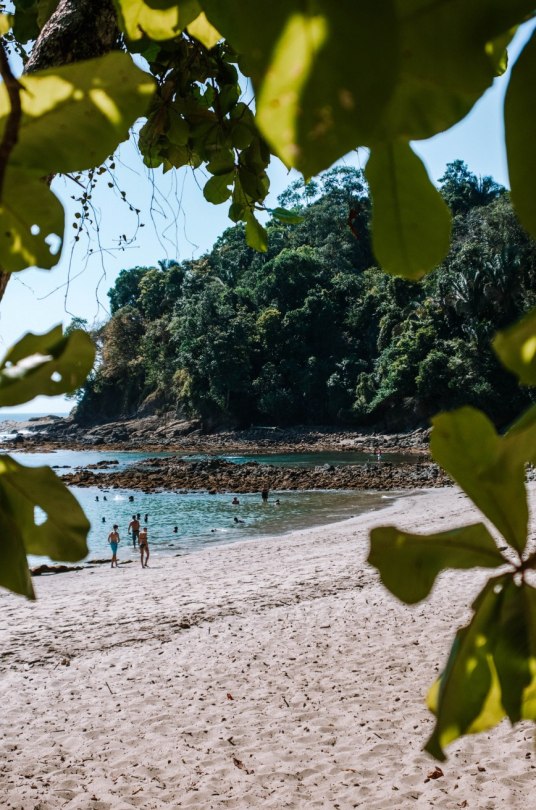
We left the park at 11:30 a.m. to grab lunch at the hotel, and said goodbye to our Caravan group as we were beginning our individual trip. I was the youngest one on the trip and the tour was definitely more orientated for an older crowd, but we made some memories with a lot of the people on the trip so it was a heartwarming goodbye.
INDIVIDUAL EXCURSION
We stayed at San Bada for a little longer to plan out our day on our own, and at 1:00 we taxied to our next hotel which was only around 15 minutes away. Peace of Paradise was a very cute apartment-style hotel which had a balcony with a sliding screen door.
We later found out why the door was sliding – monkeys had figured out how to open regular push/pull doors and had raided the kitchens for food! I went to take a nap, but I was incredibly surprised when my dad opened my door and told me there were monkeys at the door. I completely thought he was joking, so I dismissed it until he told me to grab my camera (then I knew it was real). I sprung out of bed to find a group of monkeys raiding the neighbors house for sandwiches and eggs. They were so close I was able to use my phone to take photos, and their visit was definitely a highlight of my trip.

After that excitement, we decided to explore the town so we went to a grocery store and picked up some snacks for the next few days. At 6:30 p.m. we decided to find a place for dinner and walked through town to see what our options were. We ended up at Victoria’s – a gourmet Italian place which had absolutely delicious food. I got fettuccine alfredo with chicken and I wish that I could have finished it it was so good. The customer service was the best we’ve ever had, and we were waited on by several people. One waiter, Manny, is a photographer and showed us his photos and shared his Instagram with us – I still follow him! We had a lovely evening at the restaurant and I highly recommend it to anyone in the Manuel Antonio area.
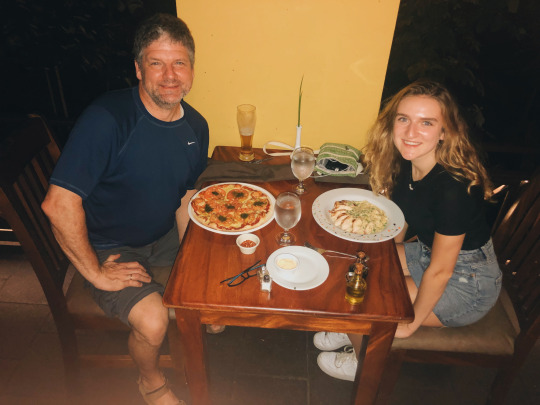
DAY 1: TRAVELING TO DRAKE BAY We woke up at 6:15 a.m. and packed up to leave Peace of Paradise, and one of the employees asked to take our photo in front of the sign for the hotel (they do this for every guest and compile the images on Facebook).
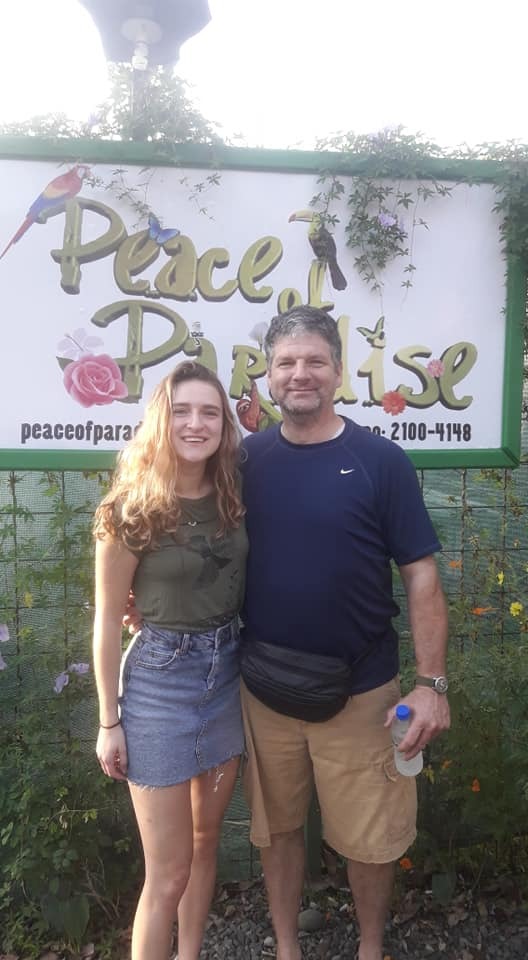
We spent most of the day traveling from Manuel Antonio to the Osa Peninsula where we would be staying in Drake Bay for three nights. We took a small van from the San Bada hotel to Sierpe which was a scenic two-hour ride with palm trees lining both sides of the street.
We arrived at a small restaurant that sits right where the boats to Drake Bay depart and spent two hours there waiting for our boat to be ready. I had some scrambled eggs and a strawberry banana smoothie (what else is new) and worked on some photo editing to kill some time (there was stable WiFi).
Eventually, we loaded the boats which were very crowded (around 30 people), and we had to put our lifejackets on (all of the luggage was stored in the cabin of the boat). The first half of the boat ride was very calm, but it became pretty bumpy when we reached the ocean. In order to dismount the boat, you had to get out into knee-high water and walk to shore because the boats could not go all the way so make sure to wear some sandals. The crew will take care of your luggage for you and will carry it over their heads to shore.
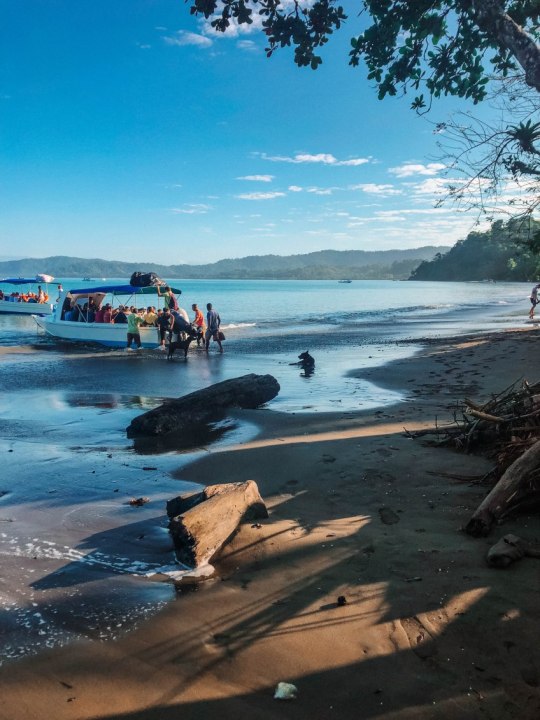
Hotel employees of Cabinas Murillo, the hotel we were planning to stay in, met us on the beach and carried our luggage to a pick up truck. We got inside the truck and they drove us a quick two-minute ride to the hotel. Almost immediately you could feel the heat difference on the Osa Peninsula. Unfortunately this hotel had no A/C (although it had two fans), so the heat easily made its way inside the room. The only way I could cool off was by sitting completely still or taking a cold shower. Sure, the hotel itself wasn’t 5 stars, but the view from our balcony was breathtaking and the price was very affordable. We spent some time cooling down by sitting on our balcony watching birds of all different colors and sizes fly around us. We decided to stay in Drake Bay for a few days because of our love for birding (specifically bird photography in my case), and the Osa Peninsula is renouned for its unique birds.

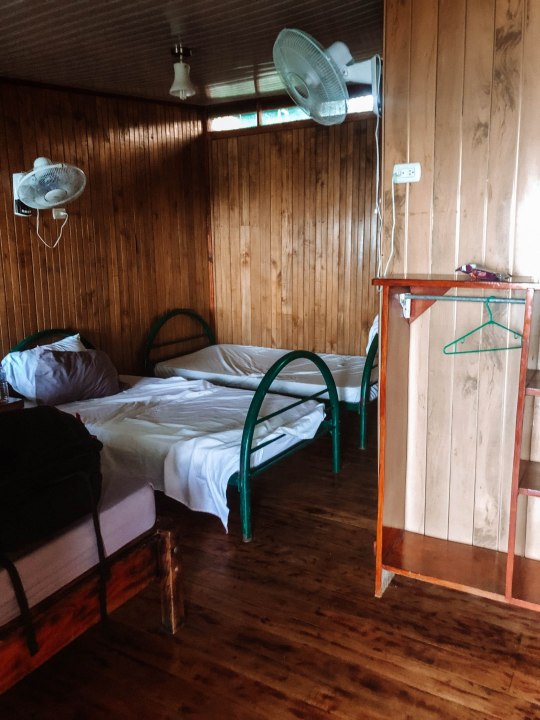
After finally cooling down, we grabbed lunch at a local place where I got a piece of pizza (I missed pizza) and yet another smoothie. The town in Drake Bay is incredibly cozy, small, and you will see a lot of locals. There are two markets in town that have any food you’ll need during your stay, serveral restaurants, a church, and some tourist-y stores. For dinner we went to a place called La Choza which had some of the best shrimp and rice we have ever eaten. We ended up having this almost every single night for dinner while in Drake Bay because of how delicious it was. The restaurant was always very busy and was a popular destination for many locals.

DAY 2: EXPLORING DRAKE BAY Because our sleep schedules were trained for early mornings we ended up waking up at 6:30 a.m. and grabbed breakfast at one of the local restaurants. I can’t remember the name of the restaurant, but I remember that they had a variety of pastries and a complete breakfast menu. We walked through the town and down to the beach where we ran into some four ��� legged friends who followed us on our walk through the bay.
We booked a birding tour online the day before (we didn’t exactly expect a response as most people book tours months in advance) and hadn’t heard anything from the company, so we spent some time looking to get in contact with the tour guide. After about an hour of searching, we recieved a phone call that we could do the tour the next day instead. If you are looking to do any type of activity or tour, I would recommend booking in advance to ensure that you’ll have a spot.
With our new free time, we walked some more through the bay (it’s very small), spent time scouting some birds from our balcony, and got ready for an early morning.


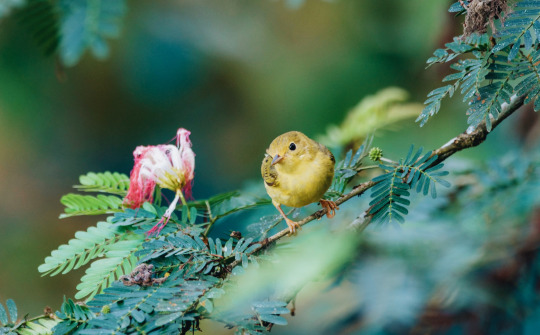
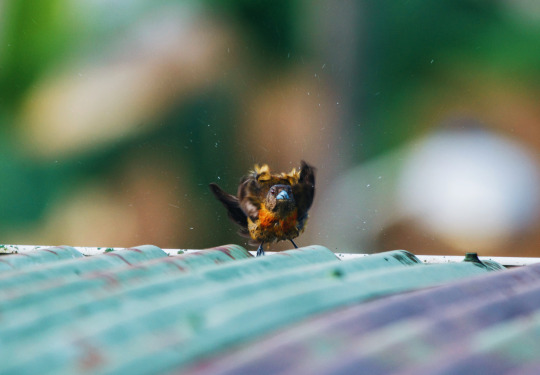
DAY 3: BIRDING TOUR
We woke up at 5:00 a.m. (our earliest morning yet) and got ready for our tour with Drake Bay Birdwatching. We packed binoculars, camera gear, water, and a change of shoes. Walter, our tour guide, picked us up at 6:10 a.m. and he explained that we would make a few different stops to see the most diversity.
Our first stop was at an open field lined by trees where we saw hummingbirds, chachalachas, and more. We spent around an hour at the field and even heard some rare birds as well. Walter was incredibly educated on the subject and got so excited when he saw a bird that it made you very excited too. His passion was clear and he was dedicated to helping me get the photos I envisioned.
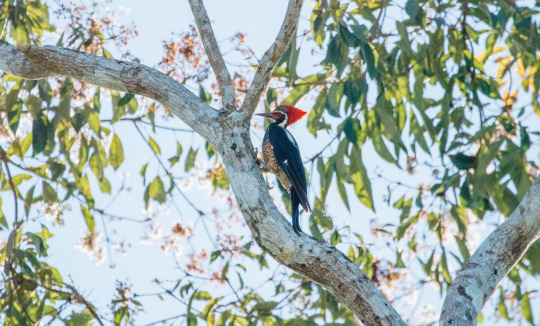

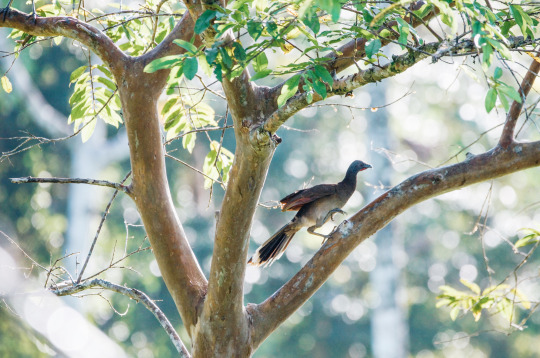
Our next photo spot was Los Planes which is part of Corcovado National Park, but is more quiet and remote. While we were hiking through Los Planes, we did not see anyone else. In the forest we saw a variety of wildlife including lizards, insects, racers, monkeys, and of course – birds. We trekked through the forest for around 2 hours and stopped at several spots along the way when we heard bird calls or when we saw something moving. There was even a (very rare) chance that we could encounter a jaguar which was exciting and chilling.
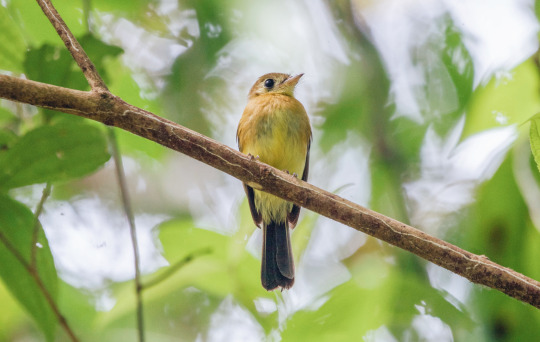
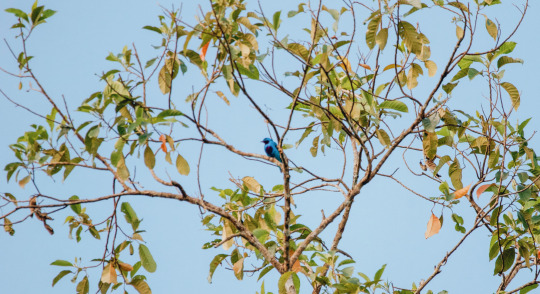
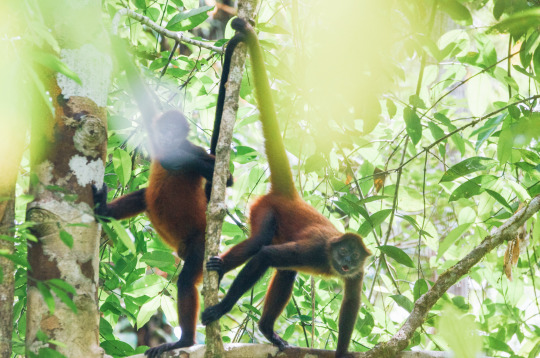
After carrying around a 7-pound camera around in the humid forest, I felt a little lightheaded; it could also be the fact that I didn’t eat anything before our tour. Make sure you either eat before a long day of hiking, or you bring a snack along the way to avoid any overexhaustion.
Walter provided us with a snack of watermelon, bananas, and lemonade after Los Planes which were all very fresh. We made a quick stop on our way back to drake bay center to try and see a king vulture, and we did! You couldn’t see it with a bare eye and my 600mm lens barely picked it up, but I managed to get the photo below.
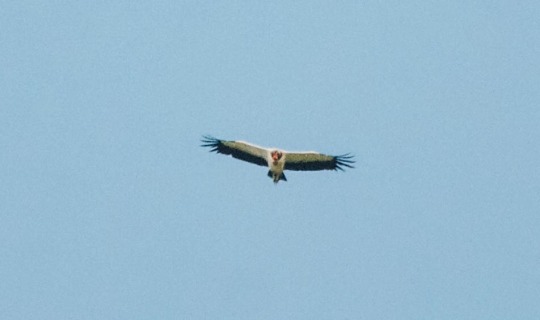
Walter drove us to a restaurant located right near our hotel where we had a scrumptious lunch (appetizers too) that were all included with the tour. Walter offered to drive us back to the hotel, but we opted to walk instead. I was exhausted by the time the tour was done and I ended up napping for a few hours before we grabbed dinner at La Choza again. I would recommend this tour to anyone who is patient and has a passion for wildlife, and if you can have Walter as your guide, his excitement, talent for spotting the wildlife, and his overall knowledge made the tour great. A few weeks after our tour Walter sent us a copy of all of the birds that we observed (heard and saw) during our trip (see photo below).

DAY 4: TRAVELING TO SAN JOSÉ
We woke up at 6:30 a.m. to catch our boat ride back to Sierpe, and from there we took a taxi to Adobe Car Rental in Uvita. We had to stop at a bank on the way because we ran out of colones in Drake Bay because there are no ATMs (make sure you load up on cash before you go to the bay!).
We were a few hours early for our rental car, so we ate brunch at Marino Ballena which was located across the street. I easily spent a lot of time at this restaurant because of the great food, customer service, and WiFi. The owner was from New Jersey and was very friendly and even provided me with the WiFi information (which was a blessing after not having it for a few days). I ate the “American breakfast” with some orange juice which hit the spot! Our car was ready at 12:30 p.m. (a little early!) so we were able to head out to our next hotel. The car ride to the hotel had some great views of the central valley.
Marriott Courtyard in Alajuela was kind of luxurious compared to Cabinas Murillo (but hey – you get what you pay for!). It was nice to finally have a night with A/C tucked under the covers.
DAY 5: HEADING HOME After two, long weeks away from home we were both ready to travel back to Massachusetts (home sweet home). We woke up at 8:00 a.m. and had a very relaxing morning at the Marriott. We went downstairs for breakfast and similar to the JW Marriott in Guanacaste, the buffet was full of scrumptious choices. We had some time to kill before our flight, so we visited the Botanical Orchid Garden in Alajuela for one last adventure.
The garden was unfortunately underwhelming, but it may have been the time of year we went. There were some birds on display, a pretty pond, a unique bamboo trail, and greenhouses full of different types of vegetation. We spent some time taking some photos at the garden and listening to the thundering of massive bamboo hitting each other in the wind before we went on our way to the car rental place to drop off our car.


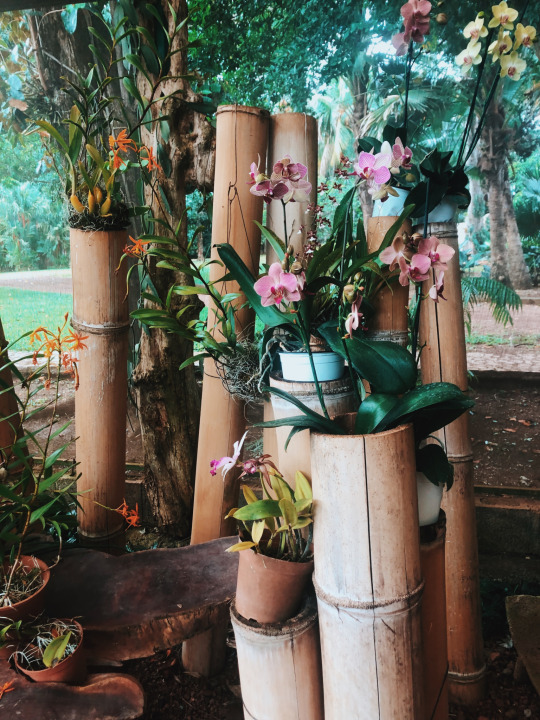
We got a ride to the airport from the car rental place and we began the journey home. We took two connecting flights to Boston from San José and after a day of travel we got home at 2 a.m..
AN UNFORGETTABLE EXPERIENCE
I know I haven’t travelled much yet, but my experiences in Costa Rica have been some that I wouldn’t change for anything, and this magical place will hold a special place in my heart forever. I’ve seen a lot of Costa Rica, but I haven’t seen it all, so I want to go back and finish my journey one day. The wildlife, people, and landscapes, are all reasons to visit this country. In Costa Rica, I was able to exercise all of my passions, expand my appreciation for nature, and try things outside of my comfort zone (leaving home for two-weeks was certainly a start).
Trust me, you are going to want to visit this stunning country in order to discover the laid-back nature of living with Pura Vida (Pure Life).
0 notes
Text
Welcome Atavist! A Groundbreaking Publishing Platform Joins the WordPress.com Family
Today we’re announcing that Atavist, a multimedia publishing platform and award-winning magazine, will be joining WordPress.com parent company Automattic.
This news is exciting to me on a few levels — eight years ago I had my first introduction to Atavist when I met a journalist named Evan Ratliff for coffee at Housing Works in New York. He showed me the first pieces of what became a bold new platform for long-form storytelling, which he created with co-founders Jefferson Rabb and Nicholas Thompson. At the time I had just started Longreads, so we shared an interest in seeing a revival for long-form journalism on the open web.
Fast-forward to today and we’re thrilled to have the Atavist and Longreads teams now together under the WordPress.com banner. Atavist’s publishing platform will be moving over to WordPress, and its award-winning magazine The Atavist will continue to serve up outstanding in-depth storytelling with a new feature each month, under the editorship of Seyward Darby. Also joining the team is Atavist CEO Rabb and head of product communications Kathleen Ross.
I chatted with Rabb, Darby, and Ross about what’s next.
Jeff, Seyward, Kathleen, we’re excited you’re here! You’ve had a terrific run over the past eight years — leading innovation around the design and process of multimedia storytelling, winning many awards along the way — what are your hopes and priorities for Atavist moving forward?
RABB: Thank you, I’m thrilled to be here! My number one hope in joining [WordPress.com parent company] Automattic is to bring everything we have built and learned to an audience that is orders of magnitude larger. I’ve spent the past eight years honing a toolset and sensibility for digital journalism, and now I’m excited to put this to use for a mass audience. When these are integrated into WordPress, I am hoping we will have an unbeatable product for storytelling and journalism. There are many fascinating challenges and problems in journalism today, and now more than ever I want to be part of the solution.
DARBY: I’m also excited to be here! I’ve been at The Atavist Magazine for the last 15 months, and it’s the best job I’ve ever had. The list of things I love about our publication is too long to include in full, but some highlights are the intimate collaborations with creators, the anchoring belief in the timeless power of cinematic storytelling, and the commitment to nurturing the next generation of long-form writers. Certainly, we work with big-name journalists, but we’re also a magazine that supports up-and-coming narrative writers who want to take a swing at a really, really big story. I love nothing more than helping someone crack the code on a 15,000-word feature’s complex structure. (I’m a big fan of Post-It notes and story trees, and of fist-pumping to no one in particular when an article section falls into place.)
Moving forward, the magazine’s foundational priorities will remain the same: We’ll tell great stories, design them beautifully, treat our collaborators well, and have a lot of fun in the process. My hope is that, by combining forces with WordPress.com, we’ll get to push the boundaries of our projects: dive into more multi-part narrative investigations, produce more original video or audio where it makes good sense, improve the diversity of our roster of writers and artists, and provide journalists with the resources and time they need to report the hell out of topics they’re passionate about.
Winning awards and getting our stories optioned for film/TV, which we also have a strong track record of doing, will be goals, absolutely, but never at the expense of providing a quality experience to every person who contributes to or reads The Atavist.
Tell us about some of your favorite stories you’ve hosted.
DARBY: I’m proud of every story I’ve shepherded as the executive editor, so it’s hard for me to pick favorites. The most successful Atavist stories share the same key ingredients: a propulsive, satisfying narrative, rich characters, and scenes that make readers feel immersed in the world the writer is describing. At first blush, Kenneth R. Rosen’s story “The Devil’s Henchmen,” about what is being done with the bodies of the ISIS dead in Mosul, doesn’t seem to have much in common with Amitha Kalaichandran’s “Losing Conner’s Mind,” about a family’s quest to save a child from a rare, fatal disease; Allyn Gaestel’s “Things Fall Apart,” about an over-hyped art installation in Nigeria; Mike Mariani’s “Promethea Unbound,” about the tortured life of a child genius; or David Mark Simpson’s “Not Fuzz,” about a millionaire hotelier who moonlights as a serial police impersonator. Yet these stories all have compelling plots about everyday people whose lives are shaped by sheer will and unpredictable circumstance. You can’t put them down because you want to know what’s going to happen.
As for Atavist stories that predate my time at the magazine, I’ll award a few superlatives. Quirkiest goes to Jon Mooallem’s “American Hippopotamus,” about a bizarre plan to alter the national diet. Most Lyrical goes to Leslie Jamison’s “52 Blue,” about the world’s loneliest whale. Most Ambitious goes to Evan Ratliff’s epic “The Mastermind,” about a crime lord whose empire spanned pretty much the whole world. (It’s soon to be a book and TV show.) And Couldn’t Get It Out of My Head goes to Will Hunt and Matt Wolfe’s “The Ghosts of Pickering Trail,” about a family living in a haunted house. I’ll stop there, but I really could go on and on.
ROSS: Before I worked for Atavist, I actually worked right down the hall, so I have been reading the magazine for a long time. To me, the best Atavist Magazine stories are transporting: in “Welcome to Dog World,” Blair Braverman shows us Alaska; socialites head to Sioux Falls, South Dakota, for an early feminist victory in “The Divorce Colony” by April White; and James Verini’s “Love and Ruin” (the title story of our 2016 collection) is a romance and historical epic all in one, and I think about Nancy Hatch Dupree’s library in Afghanistan often. “A Family Matter” may be one of the most important stories we’ve done. Finally, I love stories about spectacular failures, so I have to mention Mitch Moxley’s article “Sunk,” which is about a disastrous attempt to make an epic movie about mermaids; plus, the piece has some excellent moments of maximalist design, including pixelated fish that bob across the page.
RABB: I have a soft spot for the very first stories such as “Lifted,” “Piano Demon,” and “My Mother’s Lover.” In addition to being great pieces of writing, they were the petri dishes in which our experimental approach to storytelling was born. They included ideas such as pop-up annotations, maps, and immersive sound elements. Even though the way we distribute our articles has changed dramatically since those stories were published—back then, they were exclusively on the Atavist mobile app and Kindle—many of the concepts and approaches in them formed the DNA of our company’s product. Developing those first few stories was an exciting and vital time for me.
Finally, I’m wondering what you think about the state of storytelling on the open web today. Where do you think things are headed?
DARBY: There are so many stories being told in the digital space right now, in so many ways, and to so many different audiences. Take SKAM Austin, which D.T. Max recently wrote about for The New Yorker. It’s a teen drama told entirely through Facebook posts, Instagram stories, texts, and other digital scraps and marginalia—a story crafted for its young target audience, based on the way they consume information and communicate with one another. That project is fictional, but there’s similar experimentation happening in the non-fiction space. Certainly, publications are pushing the envelope on transmedia (multi-platform storytelling) and rethinking story structure based on how events now unfold in real time in the palm of your hand. I’m thinking of projects like WIRED‘s story on police brutality, “How Social Media Shaped the Three Days That Shook America,” and National Geographic‘s partnership with ProPublica, “How the U.S. Triggered a Massacre in Mexico.” Recently, I was a fellow at the Sundance Institute’s New Frontier Lab, an incubator for storytellers who work with emerging technologies like VR, AR, and AI. It was incredible to hear the ways that this diverse group is reimagining how to create and deliver narratives. I can’t wait for all of the projects they were workshopping to be out in the world, and I hope to bring what I learned there to bear on my work at Automattic.
That said, I’m a journalist first, and when it comes to technology, I always have this nagging fear that form might compromise substance. No one should tell a story entirely via social media or VR or video just because they can; they should do so because there’s actual benefit—to the story itself, to the audience reached, and so on. I’m reminded of my very first job out of college, back in the aughts. I was a journalist in Eastern Europe and Central Asia, and I also conducted research on media training needs in the region. I met lots of aspiring journalists who said, “This international NGO helped me set up a blog, but I don’t even really know how to conduct an interview or fact-check. Can someone help me with that?” The experience has always stuck with me as a reminder that the basics of great journalism should apply no matter the platform. At The Atavist, we like to say that story comes first, and by that we mean plot and accuracy, then form and reach.
from Blogging Tips https://en.blog.wordpress.com/2018/06/21/atavist-joins-wordpress-dot-com/ via http://www.rssmix.com/
0 notes
Text
An Introduction to the Expedition
With only three months to go until we depart for our Bulgaria expedition, it seems about time we started writing about our preparation for the trek!
This post penned by Alex.
How the idea came about
I can’t say it’s always been my dream to undertake a three-week hike. I have definitely always been interested in long journeys on horseback, and I hope to one day join the Long Riders’ Guild (for riders who’ve completed a continuous journey of 1,000 miles or more) but for this trip we quickly learned that horses weren’t a transport option - brown bears populate the Rhodopes, and the rewilded horses are likely to be territorial towards other equines, so we have to rely on our own two feet.
Actually it is Lachy (my expedition partner/husband) who introduced me to the magic of seeing the world on foot. When we met he had just walked the Camino de Santiago’s northern route and was full of stories about the experience. We started exploring Scotland together (where we were based at the time) and when we moved to Australia we acquainted ourselves with the state’s national parks. With horses out of the question on this adventure, hiking was a no-brainer.

But as to how the idea first took shape, in 2014 I interned with the incredible women of Horsefly Films, who document rare horse breeds through their Rare Equine Trust. It was through their short film Tarpan: Repainting an Ancient Picture that I first learned the history of the Tarpan and that horses were now being rewilded in Europe.
Europe was once home to its own wild horse, known as the Tarpan. It became extinct, for various reasons, at the turn of the twentieth century. For the next hundred years attempts were made to ‘breed back’ a horse similar in appearance and character to the Tarpan, though it would be impossible to genetically recreate. The results of one of these efforts was the Polish Konik, which remains a popular breed to this day.
I researched and wrote an article on the attempts to recreate the Tarpan for Horses & People magazine, but the more I learned, the more curious I became. When I spoke to Rewilding Europe and learned about their work reintroducing horses to the Rhodope Mountains region of Bulgaria, I decided I wanted to see it myself.
I’ve been working as a freelance journalist for the past couple of years, writing principally about horses and the environment, and for the first time I felt those interests collide. This was a chance to share an incredible, unique story of conservation in action.
As a European, I’m enamoured of the idea of horses returning to the wild on our continent. What interests me the most is the idea of a domesticated species becoming wild again. Horses have been our partners in travel, work and leisure for thousands of years. What challenges does the species face in returning to their wild instincts? Another interesting factor for me is the aspect of human involvement. We took them from the wild, and now we’re setting them free. But the situation of feral horses around the world (mustangs, brumbies etc) indicates that we aren’t always happy about letting horses live and die without our intervention. Are we as people really ready to relinquish our hold on this species?
Almost a year ago I started the application process for a National Geographic grant. I’ve been looking at the National Geographic Explorers programs regularly for years, reading the magazine, devouring books by Dr Jane Goodall and Robyn Davidson and hoping to one day have similar adventures. In December last year I found out the grant application had been approved. I can still barely fathom the idea that I now get to call myself a National Geographic Young Explorer - I just have to make sure I earn the title in Bulgaria this June!
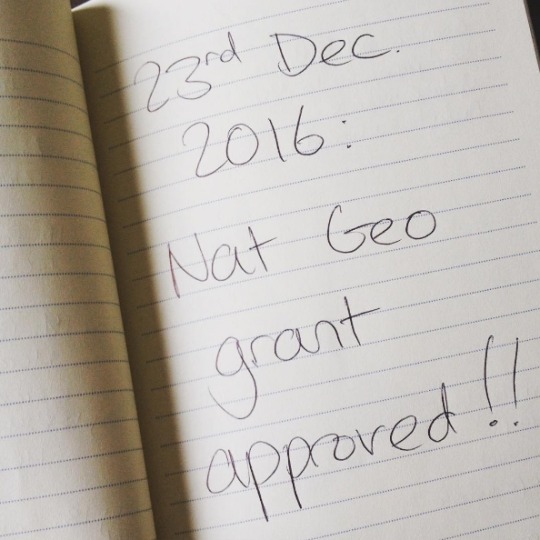
Preparing for the expedition
So, I’d come up with the idea and Lachy was on board; all we needed to do now was plan our route so we could budget accordingly. After speaking to Rewilding Europe, a couple of tourist agencies and some hiking websites, we finally managed to lay our hands on a map of the region - in fact, multiple maps, which all arrived at once.
With the help of our local contact Hristo, we plotted a route between the approximate locations of the reintroduced herds of horses in the Eastern Rhodopes. In each place we’ve allowed ourselves a few days to find the horses so we can observe them, photograph them, and record what we can. At this stage we think we’ll mainly be following part of the TransRhodope hiking and mountain biking trail, coming off it only when we reach the horses - but the state of the trails on the ground will be the deciding factor, and we have plenty of time to negotiate our 120km+ route.
With the route sorted we next had to figure out what gear we’d need. We have our own tent, sleeping bags, mats and so on, but they’re not really designed for being carried over long distances, or the kind of weather we’re expecting in Bulgaria in June. So we turned to Kathmandu. We’ve been regular customers there ever since we moved to Melbourne and we’re both serious fans of their equipment. I knew they ran an adventure sponsorship program, so I put in an application, and last month we learned we were successful!
Not only were they excited, they helped me upgrade some of our requests to equipment that would be even better suited to our hike. It was so amazing to think of them all looking over our application and brainstorming ways to make the expedition as streamlined as possible.

With gear sorted, it’s all down to us now to prepare ourselves physically and mentally for the task ahead. We have a dog (a brown Kelpie named Finn) and two horses, so we spend a lot of our time walking and riding, but now we’re putting in the time on day hikes with heavy packs, getting used to the weight and practising our navigation skills. Well, particularly me, since I have always relied heavily on Lachy when it comes to navigating! Our biggest prep adventure is planned for April, when we’ll spend five days hiking the Goldfields Track in Victoria, carrying all our gear and camping along the way.
I hope this has been a decent introduction to the massive adventure we’ll be undertaking this June. We’ll definitely be posting about our preparation and practice hikes here - so stay tuned! And make sure you follow us on instagram and twitter @wildhorses_eu for news and photos.
0 notes